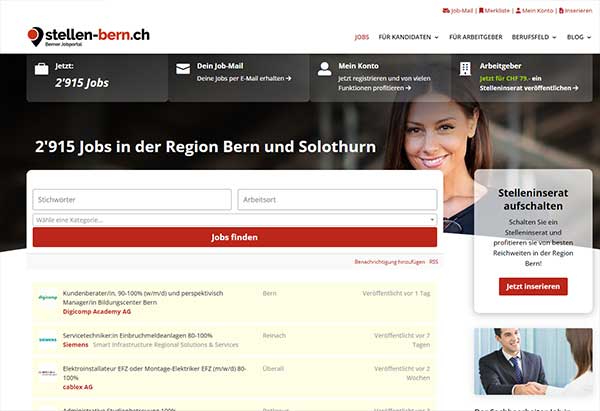Web Solutions for Real Estate






Realties – Agents – Developers – Estates

Awards our clients received

Real Estate Web Design & Property Feeds
Renet VaultRE – any REAXML Feed – Integrated with your Website – Managed Feed Integration
WebRealty is a collaboration between a business automation specialist and a boutique web design agency in South East Queensland, serving Real Estate clients around Australia. We create stunning websites to make you look the part, and we implement your feed and maintain its functionality. It is our mission to bring your Realty online with the least amount of hassles and keep you connected. References available on request.
Call Back request
Introducing: Capsicum Corporation
Capsicum Corporation is a Hervey Bay based IT and Business Automation specialist. With 20+ years industry experience and an inhouse engineering team, Capsicum provides the technical integration of the REAXML feed to display properties on your Real Estate Website with the same single engagement action with which you distribute your property listings to the large realestate and domain websites.
We provide a full range of Business IT Services & we are a certified Microsoft Partner
-
Business Automation Solutions
-
Microsoft 365 Enterprise Cloud Solutions
-
VoIP Cloud Business Phone Solutions
-
Website to Business Systems Workflows

Introducing: WEB DESIGN 4 BUSINESS
Based in the Wide Bay Burnett, WEB DESIGN 4 BUSINESS provides business web design solutions and digital marketing projects Australia wide. With 20+ years experience in web development and digital marketing WEB DESIGN 4 BUSINESS will assure your website looks the part, is designed for all device sizes, is fully maintained with monitored security. Search Engine Optimisation Services available. No compromise design guarantee – get the look you want.
Call Back request

How to Choose a Web Design Agency for Real Estate Business
The Significance of a Quality Web Design Agency When it comes to establishing a successful online presence for your real estate business, …

Essential Elements of a Top Quality Real Estate Website
Understanding Real Estate Website Design In the competitive world of real estate, having a strong online presence is crucial. A well-designed website …

A Special Thank you Note to Stellen Bern
•
Recommendations and Partners
Thanks guys for working with us! A big shout out to https://www.stellen-bern.ch/ and the team Dear Stellen-Bern Team, We would like to …
Introduction to Real Estate Data Standards:
Real estate data standards play a crucial role in the modern real estate industry, facilitating the exchange of information between different stakeholders, including real estate agents, property portals, and other relevant entities. These standards help ensure consistency, accuracy, and interoperability in the transmission of property listings and related data.
REAXML – Real Estate Advertising XML:
REAXML, short for Real Estate Advertising XML, is a standard used in Australia for the exchange of real estate data. As an XML-based format, REAXML leverages the extensible markup language (XML) to structure and encode information in a way that is both human-readable and machine-readable. XML is widely used for data interchange between systems due to its simplicity, flexibility, and extensibility.
The primary purpose of REAXML is to provide a standardized format for representing property listings and associated information. This includes details such as property features, location, pricing, and agent contacts. By adopting a common data format, different real estate systems can communicate seamlessly, reducing the need for manual data entry and minimizing errors in the process.
Key Components of REAXML:
REAXML typically includes various elements and attributes to represent diverse aspects of a property listing. Some of the key components may include:
-
Property Details: Information about the property, such as its type (e.g., residential, commercial), number of bedrooms, bathrooms, and other features.
-
Location Information: Details regarding the property’s location, including its address, suburb, and geographic coordinates.
-
Pricing: Information related to the property’s pricing, including the listing price and any additional financial details.
-
Agent Contact: Contact information for the real estate agent or agency responsible for the listing.
-
Media and Images: Support for images and multimedia content associated with the property listing.
-
Listing Status: Information about the status of the listing, such as whether it is for sale, rent, or under contract.
These components provide a standardized structure for representing real estate data, making it easier for systems to interpret and process the information accurately.
Benefits of REAXML:
The adoption of REAXML offers several benefits to the real estate industry:
-
Interoperability: REAXML promotes interoperability between different real estate systems. This means that information can be seamlessly exchanged between various platforms without compatibility issues.
-
Efficiency: By using a standardized format, real estate professionals can save time and resources that would otherwise be spent on manual data entry or dealing with data inconsistencies.
-
Accuracy: Standardization helps reduce errors in data transmission, ensuring that property information is accurately represented across different systems.
-
Consistency: REAXML fosters consistency in the way property listings are formatted and presented, providing a uniform experience for both real estate professionals and consumers.
-
Integration: Real estate agents and platforms can integrate their systems more easily, allowing for a smoother flow of data and improved collaboration within the industry.
Evolution and Updates:
It’s essential to note that standards and technologies evolve over time. While REAXML has been a significant standard in the Australian real estate landscape, updates or revisions may have occurred since my last knowledge update in January 2022. Real estate organizations and technology providers often work collaboratively to refine and enhance data standards to address emerging needs and challenges in the industry.
Broader Context of Real Estate Technology in Australia:
Australia has witnessed significant advancements in real estate technology, with innovations ranging from online property portals and mobile apps to data analytics and virtual reality applications. The integration of standardized data formats like REAXML contributes to the overall digital transformation of the real estate sector.
Conclusion:
REAXML serves as a valuable tool in the Australian real estate industry, promoting the seamless exchange of property data among different stakeholders. As a standardized format based on XML, it addresses the need for consistency, accuracy, and interoperability in the representation of property listings. The adoption of REAXML brings efficiency, accuracy, and integration benefits to the real estate ecosystem, contributing to the ongoing evolution of technology within the industry. Stakeholders in the real estate sector should stay informed about any updates or changes to standards like REAXML to leverage the latest advancements in data exchange and collaboration
Web Design custom created layout, corporate design guidelines
A compelling online presence is essential for real estate agencies to showcase properties, engage potential clients, and stay competitive in the market. Web design and content distribution mechanisms, such as RSS feeds, play pivotal roles in creating a user-friendly experience and effectively disseminating information. In this discussion, we’ll delve into the significance of web design and the integration of RSS feeds for real estate agency websites.
Web Design in Real Estate: Aesthetic Appeal and User Experience
User-Centric Design:
Effective web design goes beyond aesthetic appeal; it prioritizes user experience. Real estate agency websites need to be intuitive, responsive, and visually engaging to capture and retain the attention of potential clients. Navigation should be seamless, allowing visitors to easily explore property listings, filter search results, and access crucial information.
Responsive Design:
In the era of mobile devices, responsive design is imperative. Prospective homebuyers may browse listings on smartphones or tablets, and a website that adapts seamlessly to various screen sizes enhances accessibility and user satisfaction. A responsive design ensures that property details, images, and interactive features are optimized for a range of devices, contributing to a positive user experience.
Visual Content and Multimedia Integration:
Real estate is a visual industry, and high-quality images, videos, and virtual tours can significantly impact a visitor’s perception of a property. Incorporating multimedia elements into web design provides a more immersive experience, allowing users to virtually tour a property before scheduling a physical visit. Effective use of visuals enhances engagement and facilitates informed decision-making.
Intuitive Search Functionality:
A robust search feature is critical for real estate websites. Users should be able to filter property listings based on various criteria such as location, price range, number of bedrooms, and amenities. Advanced search options contribute to a personalized experience, helping potential buyers find properties that align with their preferences quickly.
Clear Calls to Action (CTAs):
Well-placed and clear calls to action guide users through the website and encourage desired actions, such as contacting an agent, scheduling a showing, or signing up for newsletters. CTAs should be strategically integrated into the design, prompting users to take the next steps in their property search journey.
Integration of RSS Feeds: Streamlining Content Distribution
Understanding RSS Feeds:
RSS (Really Simple Syndication) feeds are structured data formats used to publish frequently updated content. For real estate agencies, RSS feeds can be a powerful tool for efficiently distributing and syndicating property listings and updates across various platforms. These feeds allow users to subscribe to content updates, ensuring they receive the latest information without actively visiting the website.
Benefits of RSS Feeds in Real Estate:
-
Automated Content Distribution: RSS feeds enable real estate agencies to automate the distribution of property listings to various platforms, including social media, partner websites, and aggregator sites. This automation saves time and ensures that listings are consistently updated across different channels.
-
Increased Visibility: Syndicating content through RSS feeds increases the visibility of property listings. As listings are shared on external platforms and partner websites, the agency reaches a broader audience, potentially attracting more qualified leads.
-
Enhanced Marketing Strategies: Real estate agencies can leverage RSS feeds to enhance their marketing strategies. For example, a blog section on the website could have an RSS feed, allowing subscribers to stay updated on market trends, neighborhood highlights, and industry news.
-
Improved User Engagement: RSS feeds contribute to user engagement by providing a convenient way for clients and prospects to stay informed about new listings and updates. By subscribing to property feeds, users receive timely information without the need to actively check the website.
Integrating RSS Feeds into Web Design:
-
Dynamic Property Listings: Embedding RSS feeds into the website allows for the dynamic display of property listings. This ensures that users see the latest available properties directly on the homepage or dedicated property listings page.
-
Customizable Feeds: Real estate agencies can create customizable RSS feeds based on property types, locations, or other relevant criteria. This customization allows users to subscribe to feeds that match their specific preferences, receiving only the information that is most relevant to them.
Real estate agencies that invest in a visually appealing, user-centric website design while harnessing the power of RSS feeds for content distribution position themselves for online success. By embracing these technologies, agencies can effectively showcase their listings, engage with potential clients, and stay ahead in the competitive real estate market. As technology continues to evolve, staying attuned to emerging trends and innovations will be crucial for real estate agencies looking to maintain a strong online presence